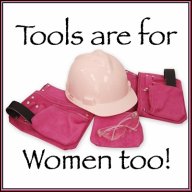So, a little while ago an email showed up in my inbox asking if I would check out this article and post it here if interested. I was pleasantly surprised to see it was about signing, something we totally believe in here at our home. Without any further ado, here is the article sent to me by Emily Patterson, Communications Coordinator at Primrose Schools.
----------------------------------------------------------------------
Early Childhood Education – Acquiring Sign Language
Signing Before They Can Speak
Research has shown that teaching different modes of communication and language is most effective at the early ages of 2 to 5. This goes beyond the spoken word (though it is an optimal time for children to learn a second language); many young children have an aptitude for signing as well. This can be taught at home or some child care programs incorporate it into their curriculum.
While 2 years old seem pretty young, it's not that odd. There are many indigenous peoples around the world in fact, including American Indian nations, who have used sign language for centuries to facilitate communication with other tribes with whom they do not share a language.
In fact, recent research suggests that sign language is innate. Backing this up is an article published by the Boulder Daily Camera in 2003 which presented strong evidence that babies as young as six months old communicate with their hands:
"...by 6 to 7 months, babies can remember a sign. At eight months, children
can begin to imitate gestures and sign single words. By 24 months, children
can sign compound words and full sentences. They say sign language reduces
frustration in young children by giving them a means to express themselves
before they know how to talk." (Glarion, 2003)
Signing and Autism
The ability to sign has also helped parents in communicating with autistic children; one parent reports that "using sign language allowed her to communicate with her [autistic] son and minimized his frustration...[he now] has an advanced vocabulary and excels in math, spelling and music" (Glarion, 2003).
One of the most frustrating part of raising an autistic child is the breakdown in communication. Autistic children have a hard time with the complexity of the spoke language, signing gives them an avenue of communication which at the same time helps to strengthen speech and language development. Sign language allows parents to break down this barrier with their children (actually regardless of whether they are autistic or not).
The Best Time To Start
The sooner children learn sign language (or any other language for that matter) the better. Young children who are taught sign language at an early age, it has actually been shown, develop better verbal skills as they get older.
Not learning to sign give pre-verbal youngsters a way to communicate, it can also strengthen the parent-child bond. Signing helps to lower levels of frustration in the child, it gives them a way to communicate with the caregivers exactly what is going on in their mind. Which in return helps the parent and makes them feel even closer to their baby.
Looking To Their Future
There are many reasons for people to be interested in and to learn sign language. Many may need it they work with disabled children, some are learning it because of the career opportunities available with it, and others are learning it just so they can have a wide variety of communication.
The ability to communicate articulately in a variety of ways with the widest possible audience is a unique skill that not many have. This includes bilingual ability as well as the ability to communicate in non-verbal ways for the benefit of the disabled – primarily the deaf.
Co-written by Emily Patterson and Kathleen Thomas
Emily and Kathleen are Communications Coordinators for the Austin child care facility, a member of the AdvancED® accredited family of Primrose Schools (located in 16 states throughout the U.S.) and part of the network of child care preschools delivering progressive, early childhood, Balanced Learning® curriculum.
-----------------------------------------------------------------
Personally, we love sign here, as I mentioned before. It is a vital part of communication for a non-verbal child. Some of my kids were able to use the signs earlier than others but it was so great to see each of them use and understand them in their own time. Now, we don't use sign for all of our language, though that would certainly interest me. In fact, when I was in Junior High and High School, I would bring home books on American Sign Language and attempt to teach myself. I would still be interested in learning ASL. We just use sign for some of the more basic communication needs at this point like "milk", "all done", "please" "thank you", "excuse me" "sorry", "more", etc. I found this website that allows me to search for many different ASL signs and sign them properly. So, I am in agreement with the above article and would encourage you to use sign in your home with your wee ones. It makes a world of difference for them to be able to communicate in a way that we as caregivers understand. The frustration level is certainly minimized. Finally, my favorite signing story: Pepe had learned some of those basic signs and was fairly good at using them to communicate. One day we went to visit Grandma/Grandpa. As usual, whenever we saw them, Grandpa would open up his wallet and empty all his change into his grandkids' hands. Once empty, Grandpa put the wallet away and continued on. Pepe turns to me and - get this- signs " more please" then points to Grandpa! Ha! How I laughed!













Thanks for posting this! We're starting signing with A & L now and have been using the same website to look up things that we think are important to sign for. I'm looking forward to when they catch on and use them to communicate with us.
ReplyDelete